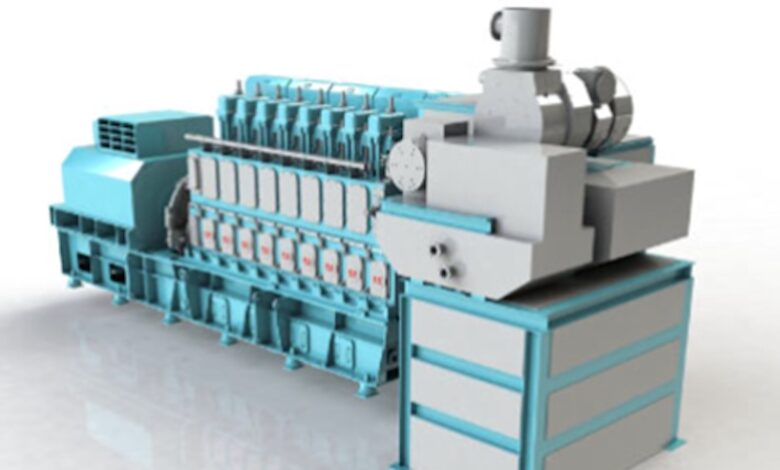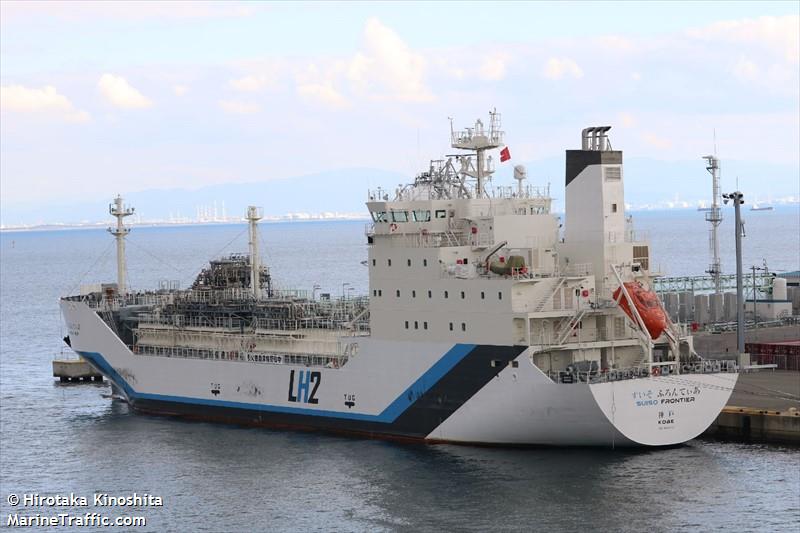 KHI
KHI
The Japanese have taken a notable step forward in developing larger sized liquefied hydrogen (LH2) carriers.
ClassNK has issued an approval in principle (AiP) for a dual fuel generator engine using hydrogen gas as fuel and related machinery systems and arrangements for a 160,000 cu m liquefied hydrogen carrier developed by Kawasaki Heavy Industries (KHI), the company behind the
Suiso Frontier , the world’s first liquefied hydrogen vessel.
, the world’s first liquefied hydrogen vessel.
For the 160,000 cu m design developed by KHI, ClassNK has so far issued AiPs for its integrated design as well as its cargo containment system, cargo handling systems, and dual fuel main boilers that use hydrogen boil-off gas as fuel.
According to KHI, the dual fuel generator engine is capable of switching between hydrogen and low-sulfur fuel oil flexibly, and when hydrogen fuel is selected, boil-off gas naturally evaporated from the ship’s liquefied hydrogen cargo tanks is used as the main fuel at a calorie – based mixed ratio of 95% or higher to generate and supply electricity onboard.
KHI built the landmark Suiso Frontier as well as a dedicated LH2 terminal in Kobe to kickstart a new Asia Pacific energy tradelane between Australia and Japan, which started operating at the beginning of this year.
Suiso Frontier has one 1,250 cu m vacuum-insulated, Type C storage tank.
In related news, Shell International Trading and Shipping has just signed a memorandum of understanding with Alfa Laval regarding the development of a new gas combustion unit for use on liquid hydrogen carriers.
“Renewable hydrogen will likely be a key fuel in tomorrow’s decarbonization mix, but accessibility will determine its impact,” said Carl Henrickson, general manager of shipping technology, Shell. “By enabling safe ocean transport of liquid hydrogen, we can help speed up the global transition to clean energy.”





